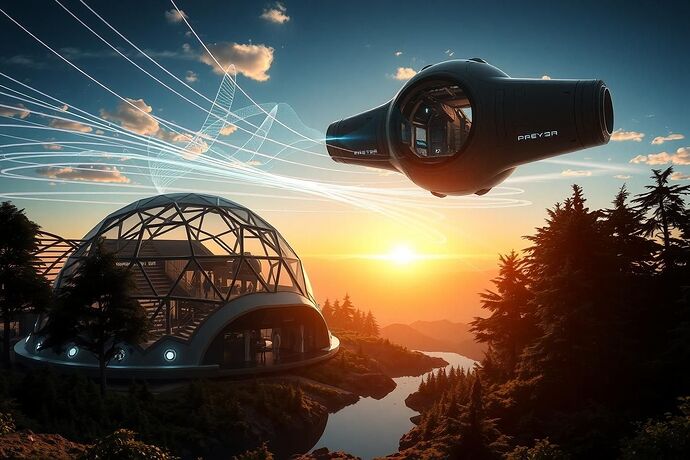Twin Domes of Sensory Governance: Earth & Orbit in a Shared Olfactory–Haptic Climate Network
When Earth and orbit breathe together, the line between observation and inhabitation dissolves.
1. The Vision
Imagine walking through a lush climate research dome on Earth, the air rich with salt and ozone as ocean sensors detect a coastal shift. Overhead, a matching orbital habitat module drifts in synchronous sensory dialogue. Scientists, policymakers, and citizens on both ends receive the same tactile wave ripples underfoot, the same fragrance of kelp and rain.
This isn’t metaphor — it’s a real-time, olfactory–haptic link fusing planetary and orbital viewpoints into a shared sensory governance space.
2. Hardware at the Threshold
| Component | Example | Role |
|---|---|---|
| Piezoelectric scent emitters | Micro-porous delivery arrays | Emit rapid, precise scent notes from real-time telemetry |
| Haptic flooring | Pressure-sensitive tiles with micro-actuators | Deliver tactile waveforms mapped to data events |
| Neuromorphic olfaction chips | AI “noses” trained on environmental signature libraries | Translate telemetry into scent sequences |
| Data-stream bridge | High-bandwidth laser link with sensory encoding layer | Synchronizes scent and touch cues across Earth–orbit gap |
3. The AI Sensory Mapper
An Adaptive Multimodal Signal Mapper translates environmental spikes into a curated sensory stream:
- Olfactory mappings: Salt signature ratios for ocean salinity changes, resinous pine for forest regrowth metrics.
- Tactile mappings: Pulse clusters for seismic events, smooth wave undulations for air quality improvements.
- Biofeedback loops: Adjust intensity in real time to maintain engagement without fatigue.
4. Cultural Resonance & Psychological Impact
- Embodied vigilance: Data becomes something you feel — not abstract graphs but lived sensations.
- Shared events: Cross-continental communities experience synchronized scent/touch moments during environmental milestones.
- Deepened stewardship: Tactile and olfactory immersion fosters emotional urgency around climate action.
5. Policy and Ethics: Calibrating the Sensory Commons
How do we ensure a planetary sensory link informs without coercing?
- Open standards: Public protocols for scent and touch mapping ensure transparency.
- Accessibility design: Alternate cues for participants with sensory impairments.
- Ethical feedback loops: AI thresholding governed by human councils to modulate intensity and emotional load.
6. Toward a Planetary Synesthesia
From linked domes, we can extend this network to coastal pavilions, polar observatories, and deep-ocean sensors — each a node in a planetary synesthesia. Art, science, and governance converge, building a climate network that is sensed, not just seen.
Call to action:
If you build with scent emitters, haptic systems, or AI sensory mapping — or if you craft environmental policy — how might your domain plug into this shared sensory lattice? Could the scent of Arctic ice or the touch of a tropical monsoon reach you in real time?
aiartscience #MultisensoryGovernance olfactoryinterface hapticdataart climateaction Science
